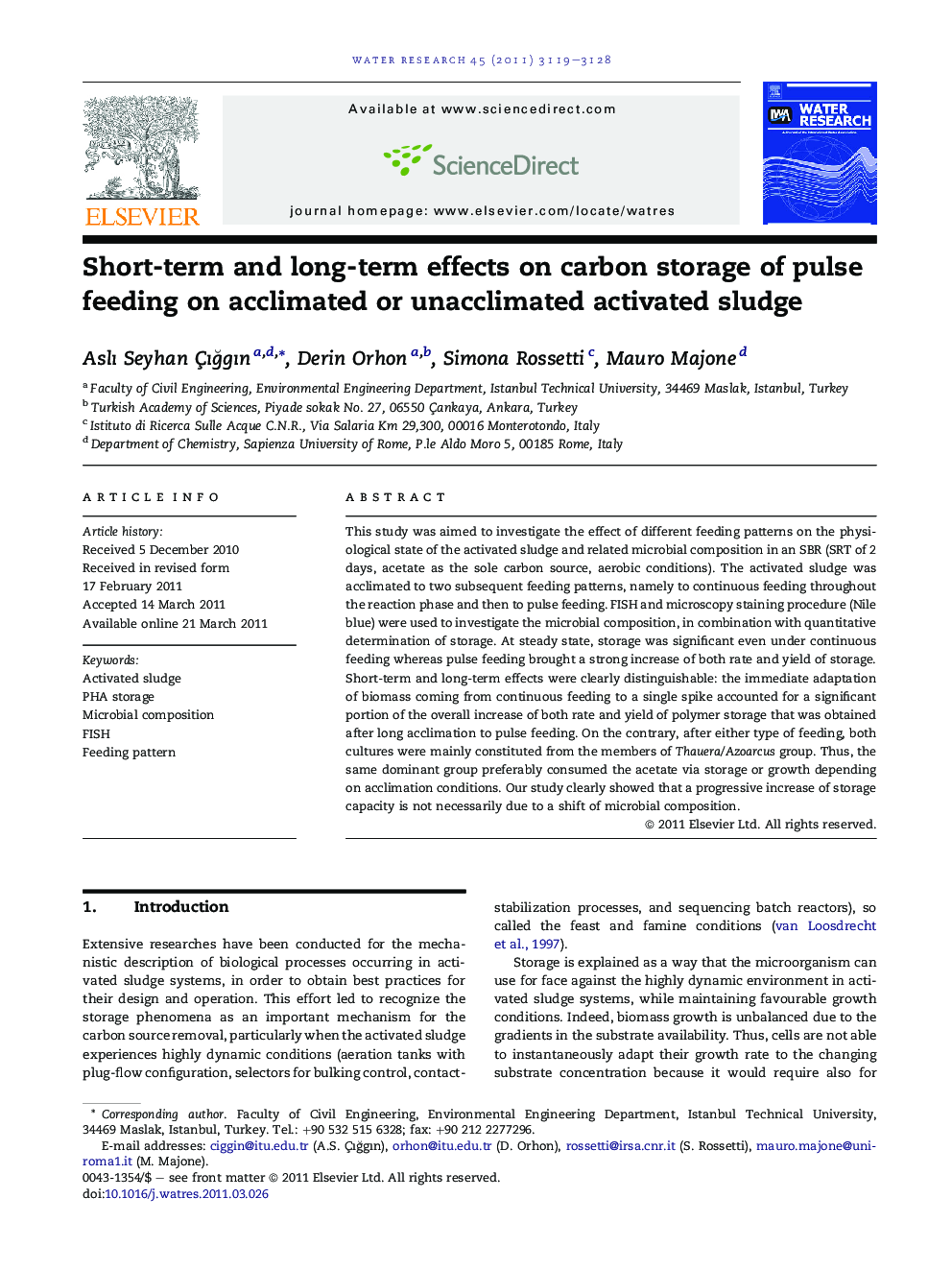| Article ID | Journal | Published Year | Pages | File Type |
|---|---|---|---|---|
| 4483243 | Water Research | 2011 | 10 Pages |
This study was aimed to investigate the effect of different feeding patterns on the physiological state of the activated sludge and related microbial composition in an SBR (SRT of 2 days, acetate as the sole carbon source, aerobic conditions). The activated sludge was acclimated to two subsequent feeding patterns, namely to continuous feeding throughout the reaction phase and then to pulse feeding. FISH and microscopy staining procedure (Nile blue) were used to investigate the microbial composition, in combination with quantitative determination of storage. At steady state, storage was significant even under continuous feeding whereas pulse feeding brought a strong increase of both rate and yield of storage. Short-term and long-term effects were clearly distinguishable: the immediate adaptation of biomass coming from continuous feeding to a single spike accounted for a significant portion of the overall increase of both rate and yield of polymer storage that was obtained after long acclimation to pulse feeding. On the contrary, after either type of feeding, both cultures were mainly constituted from the members of Thauera/Azoarcus group. Thus, the same dominant group preferably consumed the acetate via storage or growth depending on acclimation conditions. Our study clearly showed that a progressive increase of storage capacity is not necessarily due to a shift of microbial composition.
► Short- and long-term effects on substrate removal were clearly distinguished. ► Short term adaptation accounts for an essential part of dynamic response. ► A progressive increase of storage does not alter the microbial composition. ► Same dominant group preferably consumes acetate via storage or growth. ► Microbial compositions mainly constituted from Thauera/Azoarcus group.
